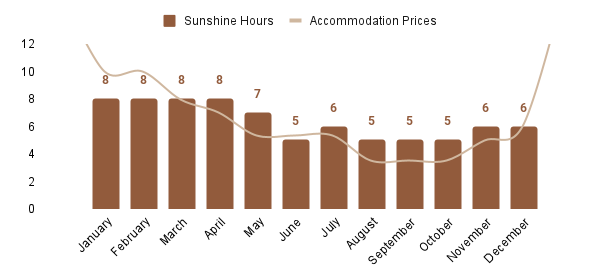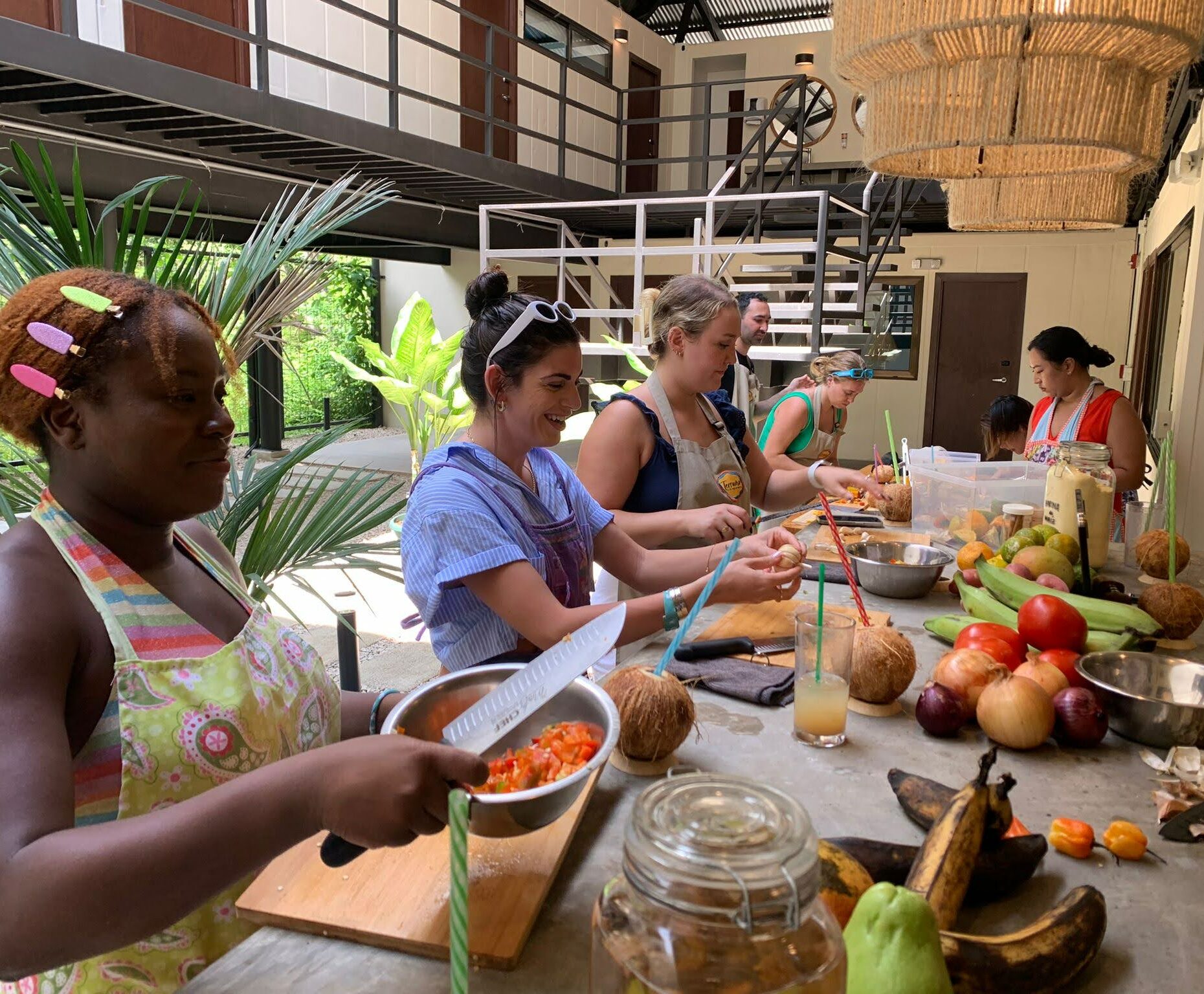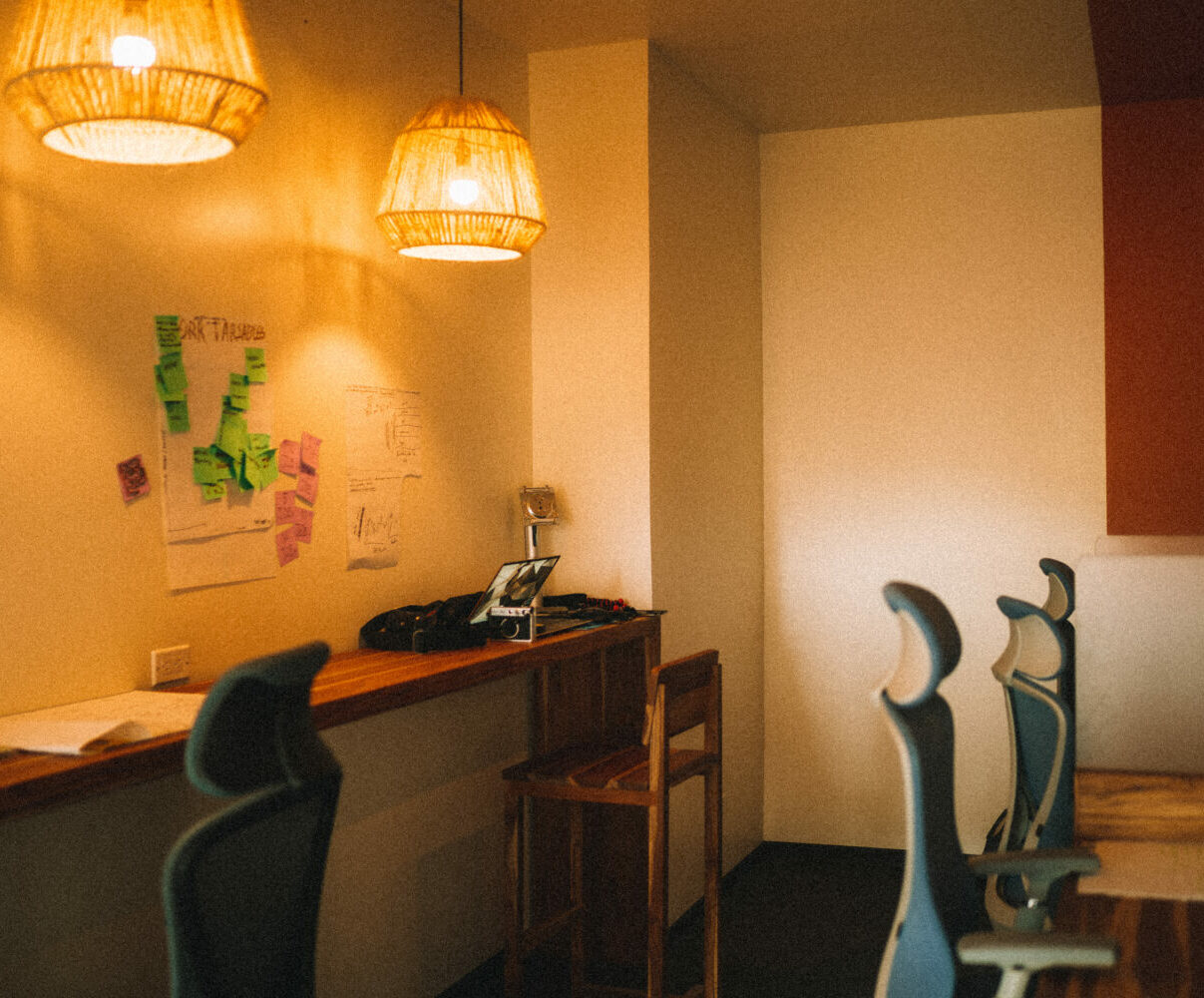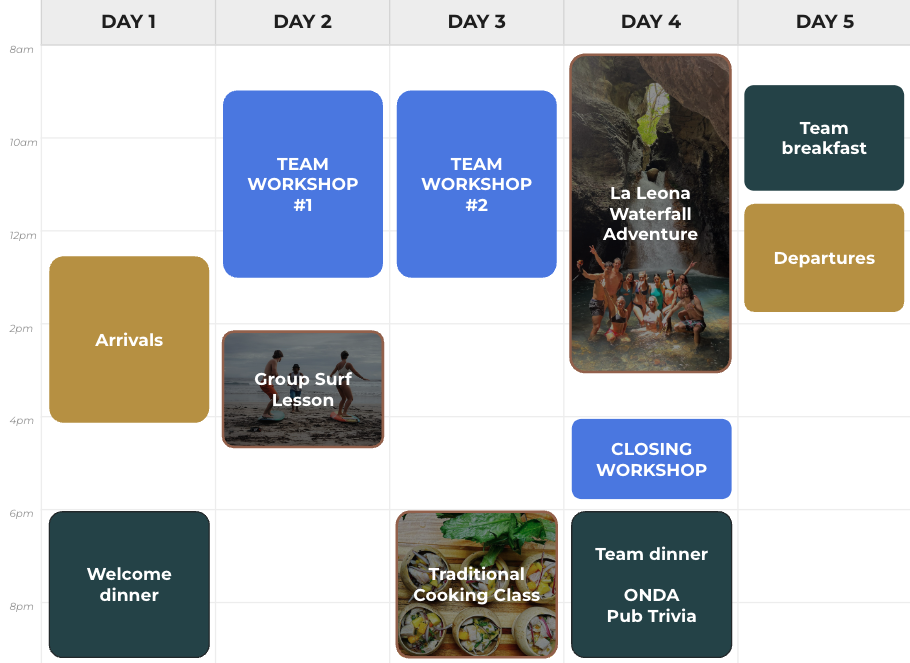Corporate offsites can become powerful tools for team building, strategic planning, and enhancing overall company culture. Destination offsites can be particularly effective in rejuvenating and inspiring your team, providing a necessary break from the usual routine, and creating memorable experiences together.
Your team’s next offsite could look like this…
We’ve put together a guide outlining 7 areas teams should consider when starting to plan a destination offsite in Costa Rica. Let us know what you think!
1. Your goals
Before diving into the logistics of planning your team’s next offsite, take a moment to define your objectives.
- What do you hope to achieve during this retreat?
- What specific goals will you set to be able to measure the success of the offsite?
Whether it’s fostering team camaraderie, sparking creativity, or strategizing for the year ahead, clarifying your goals will guide your decision-making process moving forward.
2. Why Costa Rica?
High value – Costa Rica provides the opportunity to craft beautiful, unforgettable experiences you can’t find stateside, at a price point that won’t break the bank.
Diversity in landscapes & wildlife – Although it’s one of the smallest countries in the Americas, Costa Rica boasts incredible diversity. Whether you’re dreaming of a beautiful beaches, lush rainforest, waterfalls, mountains or volcanoes, you can find it all in Costa Rica.
Safety – Costa Rica is generally considered safe for tourists, with a stable political environment and low crime rates in tourist areas.
Developed tourism infrastructure – With tourism as one of the country’s largest and most significant industries, Costa Rica is welcoming to tourists and relatively easy to navigate. This also means that English is widely spoken, and the USD is an official currency.
Leading destination – As Travel & Leisure’s top travel rec of 2024, Costa Rica continues to be a the top of traveler’s lists! It also offers Visa-free travel for citizens of most countries.
Accessible – Direct flights from major US cities to San José and Liberia make international travel relatively easy for guests.
Relaxed vibe – The laid-back pura vida lifestyle of Costa Rica promotes a stress-free and enjoyable retreat for your team.
3. Seasonality
Tourism in Costa Rica is very seasonal, meaning that prices and how busy a place is will vary depending on the time of year. Broadly speaking, there are two seasons that make up Costa Rica’s year: dry season and green (rainy) season.
Dry season – This season is defined by its dryer weather, which means it is also hotter, sunnier, and busier! Dry season = high season, characterized by more tourists and higher prices. Generally this season is from December through April. Average sunshine hours per day: 7.5.
Green (rainy) season – Although this season is defined by rainier weather, that’s not to say it’s raining all the time or that you shouldn’t visit during this season. Green season boasts lush, green surroundings, lower prices, and less tourists. Although rain is more common during these months, you will still have plenty of hours of sunshine to get out and explore! Generally this season is from June through November. Average sunshine hours per day: 5.3.
4. Destination
When determining where in Costa Rica you’ll plan to travel for your offsite, consider the following:
- Distance from international airport and cost of available transportation options (shuttle, taxi, car rental, etc.)
- Accommodation and coworking options in the area
- Activities, excursions, and attractions in the area
- Proximity to other major CR destinations, for guests who might want to travel before/after the retreat
5. Budget
Before you can start locking down the logistics, it’s necessary to have a clear budget defined for the trip.
- How many team members will make the trip?
- How many days will the offsite be?
- What are all the costs the company cover? All travel, all meals, drinks, excursions, team swag, etc.
- Who will be in charge of planning the offsite? Will it be someone’s task on the team, or will it be outsourced?
6. Accommodation
Based on the goals you’ve set and your vision for this offsite, what is your ideal accommodation? Consider your team size, preferences and the budget you’ve defined. Generally speaking, there are 3 types of accommodation you can consider: vacation rentals, boutique hotels, and resorts. Below are some pros and cons of each.
Vacation rentals
- Intimate, private
- No staff or concierge
- Small, need multiple properties for large group
- No amenities
Boutique hotels
- Hotel buyout = full hotel to yourselves
- Intimate, private
- Fully staffed
- High value
- Bar & restaurant on-site
- Concierge
Resorts
- Shared, public
- Fully staffed
- Bar & restaurant
- Concierge
- Expensive
7. Itinerary
For a team offsite, it’s important to find the right balance of work and play. Obviously you’re on a work trip, and you have your objectives you want to achieve through workshops, coworking days, breakout sessions, and more. However, too much work and not enough play will have your team members heading home feeling like they 1) barely got to explore the destination and 2) need a vacation to recover.
Every team’s work/play ratio will differ, and it might take a few offsites before you find the right groove! But we recommend a 50/50 or 60/40 ratio, and planned free time to help everyone decompress and absorb all the goodness of the trip.
Consider mixing in exciting excursions and activities that are unique to your destination. Experiencing new things together as a team will pull people out of their comfort zone and promote bonding in new situations.
Get our exclusive guide to planning your perfect offsite with ONDA
including property & room details, photos, activities & more…




